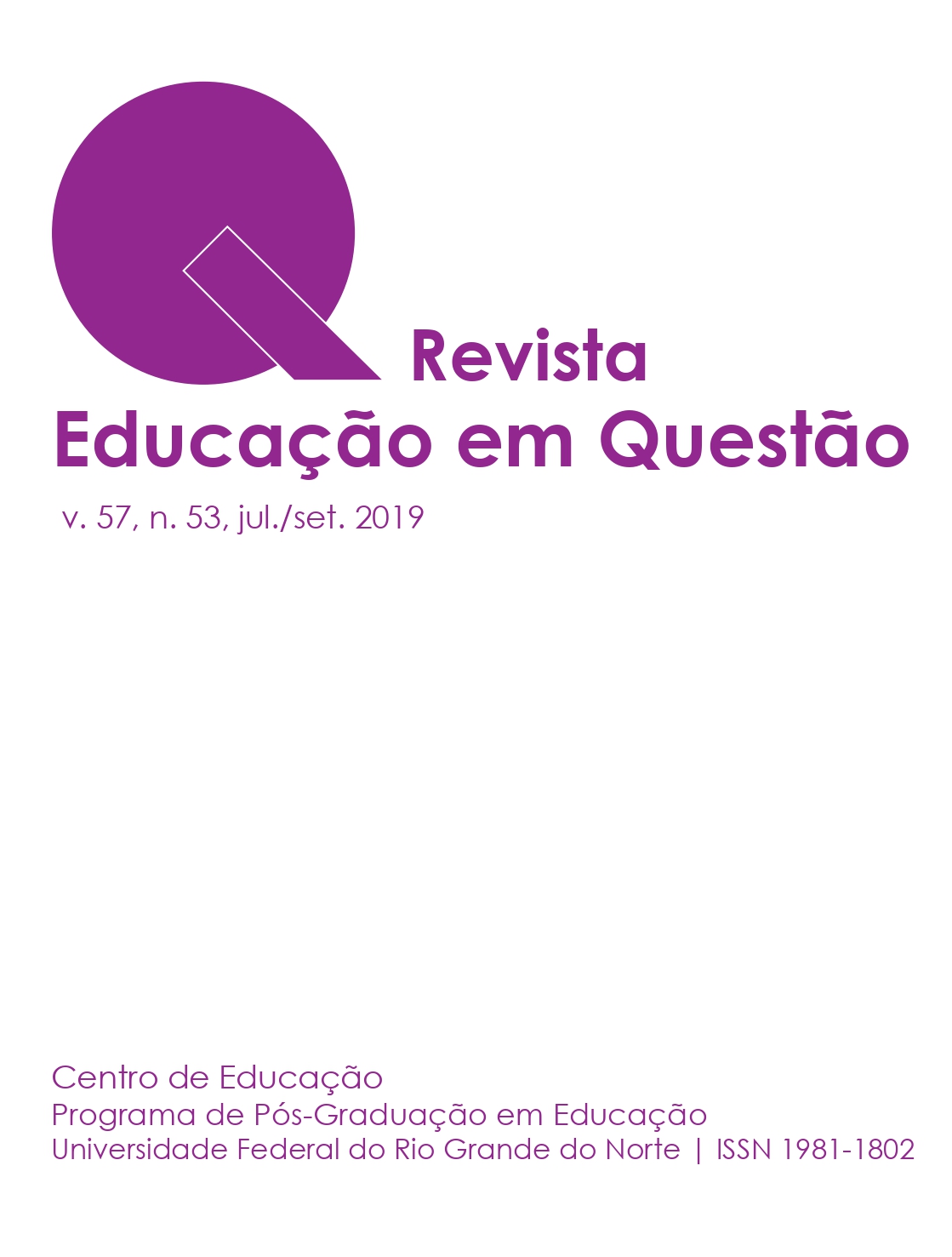Comic books, reading and discourse of interdiction in official spaces of education
DOI:
https://doi.org/10.21680/1981-1802.2019v57n53ID17033Keywords:
Discourse analysis. Comic books. Discourse of interdiction. Education.Abstract
This article aims to analyze some linguistic-discursive strategies that legitimized, in official spaces of education, the prohibition of comic books as a reading practice. For this purpose, we take a chapter of the book "Youth Literature", published in the year 1969, to compose the corpus of this article. This work was part of the "Didactic Collection of Brazil", whose objectives were to disseminate and, in some way, to prescribe principles and practices related to various themes involving education. In the possession of this corpus, we were guided by the contributions of the discourse analysis of the French line, especially having as examples the studies of Michel Pêcheux (2009 and 2015) about memory and discourse. In this article, the following research question guided us: what linguistic-discursive strategies articulate reading, comic books and sanction? Finally, we find the analyzes show that demonstrate the following linguistic-discursive strategies, with a view to the interdiction of the comic books: memory, interdiscourse, argumentation by authority, scientific discourse and official discourse.
Downloads
References
ALTHUSSER, Louis. Aparelhos ideológicos de Estado. Rio de Janeiro: Edições Graal, 1985.
Antonio D’Ávila. Literatura infanto-juvenil. São Paulo: Editora do Brasil, 1969.
BRIGGS, Asa; BURKE, Peter. Uma história social da mídia: de Gutenberg à Internet. Rio de Janeiro: 2004.
FERREIRO, Emília. O ingresso na escrita e nas culturas do escrito: seleção de textos de pesquisa. São Paulo: Cortez, 2013.
FIORIN, José Luiz. Argumentação. São Paulo: Contexto, 2015.
FOUCAULT, Michel. Vigiar e punir: nascimento da prisão. Petrópolis: Vozes, 2014.
GIROUX, Henry. Escola crítica e política cultural. São Paulo: Cortez, 1988.
KRESS, Gunther; VAN LEEUWEN, Theo. Multimodal discourse: the modes and media of contemporary communication. Londres: Bloomsbury, 2001.
OLIVEIRA, Fernando Rodrigues. O Ensino da literatura infantil e os novos modelos de curso de formação de professores: a consolidação de um campo de ensino, estudos e pesquisas (1971-2003). São Paulo: Editora da UNESP, 2015.
OSAKABE, Haquira. Argumentação e discurso político. São Paulo: Martins Fontes, 1999.
PÊCHEUX, Michel Semântica e discurso. Campinas: Editora da UNICAMP, 2009.
PÊCHEUX, Michel; ACHARD, Pierre; DAVALLON ,Jean; DURAND, Jean-Louis; Orlandi, Eni Puccinelli. Papel da memória. Campinas, SP: Pontes, 2015.
RAMA, Angela; VERGUEIRO, Waldomiro. Como usar as histórias em quadrinhos na sala de aula. São Paulo: Contexto, 2007.
RAMOS, Paulo. A leitura dos quadrinhos. São Paulo: Contexto, 2012.
WERTHAM, Frederic. Seduction of the innocent. Toronto: Rinehart, 1954.
Downloads
Published
How to Cite
Issue
Section
License
The Journal Education in Question shall retain the copyright in all articles that it publishes.
The authors and co-authors of articles and book reviews, published in the Journal Education in Question, shall wait for at least 1 (one) year before they are allowed to submit new works for publication.






